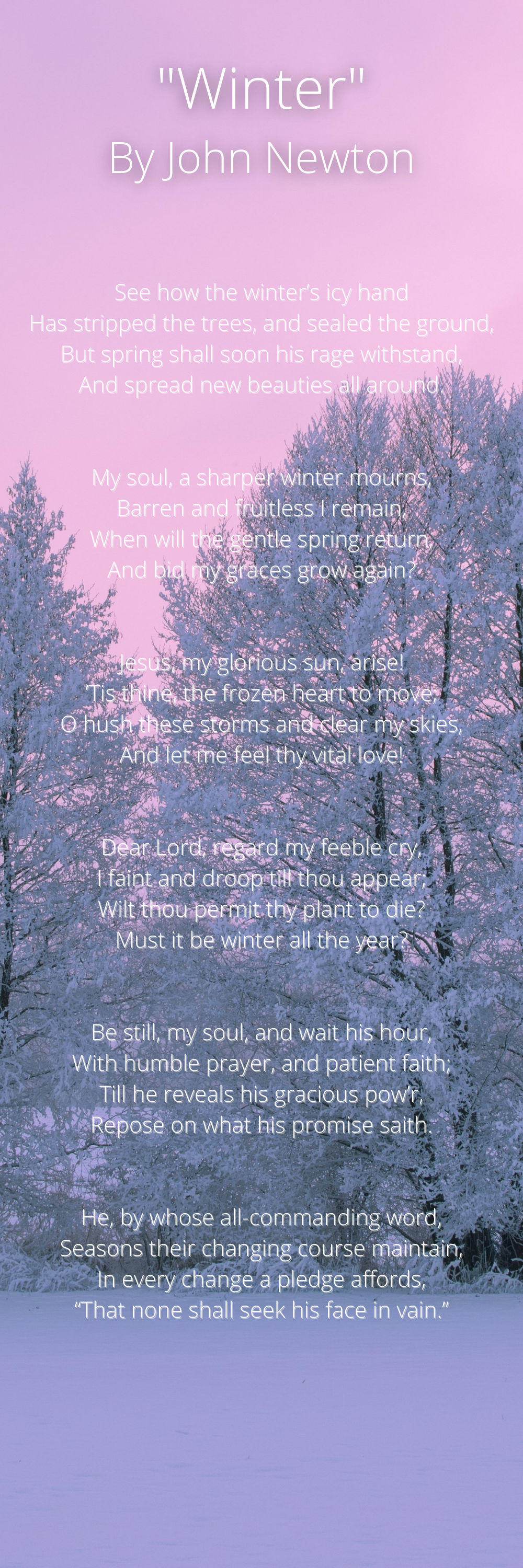By Pastor Stephen Hess –
In C.S. Lewis’s beloved classic, The Lion, the Witch, and the Wardrobe, four children enter a magical wardrobe and travel to another land called “Narnia.” When they arrive, they discover that an evil witch has put Narnia under a spell that causes it to be perpetually winter. It is a world that is cold, bleak, and broken, yet it is not a world without hope. The children quickly learn there is a prophecy that foretells of a day when winter will be no more. The prophecy states, “Wrong will be right, when Aslan comes in sight. At the sound of his roar, sorrows will be no more. When he bares his teeth, winter meets its death. And when he shakes his mane, we shall have spring again.”
I often think of these words when we are in the depths of winter. As the sun hides behind grey clouds and the temperatures turn bitter cold for weeks on end it can sometimes feel bleak and dispiriting. Yet eventually wintertime gives way to springtime and the sun thaws the earth, bringing warmth, light, and new life to all of creation.
The transformation that we witness each year as the seasons move from winter to spring should remind us of an important Biblical reality: Spiritually speaking, all of God’s creation exists in a state of “winter.” Like the land of Narnia, creation groans under a curse. The fall of humanity has caused the world to be cursed by sin, and consequently, creation is subject to brokenness and corruption. But Scripture speaks of a day when the curse will be broken, when creation will be set free from its bondage to corruption (Rom. 8:21), and when all things will be made new (Rev. 21:1-5).
The one who will make all things new is Jesus. Much like Aslan (the Christ figure in Lewis’s books) causes winter to meet its death and brings spring again, Jesus is the one who will bring an end to the curse and usher in God’s new creation. This should give us hope every time we look at the bleakness and brokenness of the world around us. It won’t always be winter, but spring will come. One day Christ will return and make all things new.
But this isn’t the only lesson we can learn from winter. Just as winter reflects a picture of our creation awaiting its renewal it also reflects a picture of our bodies awaiting their redemption. The gospel promises salvation, healing, and eternal life for all of those who trust in Christ. Yet we will not experience the fullness of these promises until after we die and enter the Kingdom of Heaven. Consequently, we groan as we struggle with sin and suffering in this world, and we anxiously await the day when these things will be no more.
Sometimes our souls can even go through a season of winter when we feel distant from God. Periods of doubt, suffering, and depression are all what might be called “winter seasons of the soul” and we never know how long they will last. During these times it is especially important to remember that winter will not last forever and our Savior promises that one day spring will come and remain for all eternity.
The famous hymn writer John Newton (author of “Amazing Grace”) spoke of this in a hymn he wrote about winter. The hymn laments a sharp winter of the soul and asks, “When will the gentle spring return, and bid my graces grow again?” The answer is given a few stanzas later: “Be still, my soul, and wait his hour, with humble prayer and patient faith; Till he reveals his gracious power, repose on what his promise saith.”


